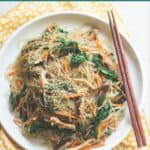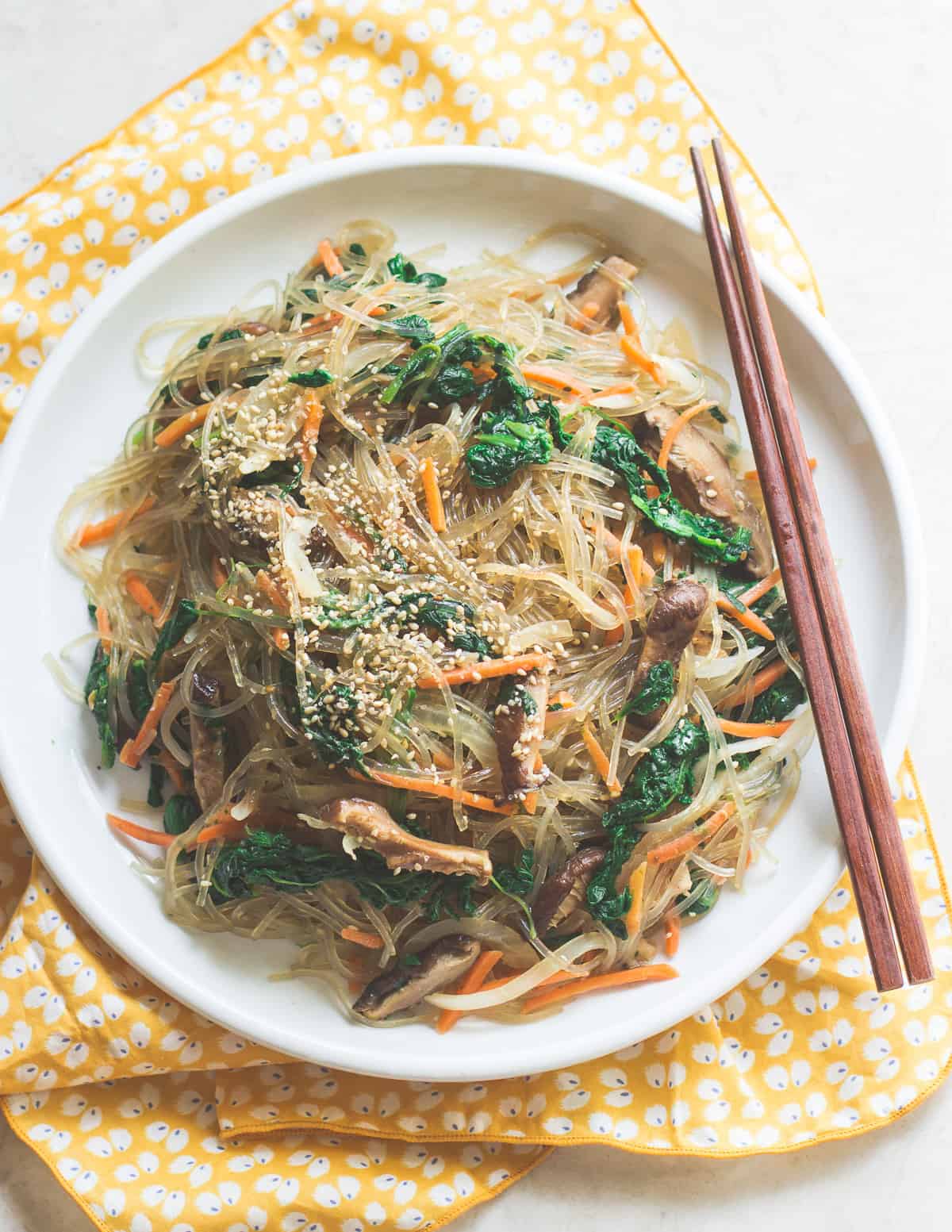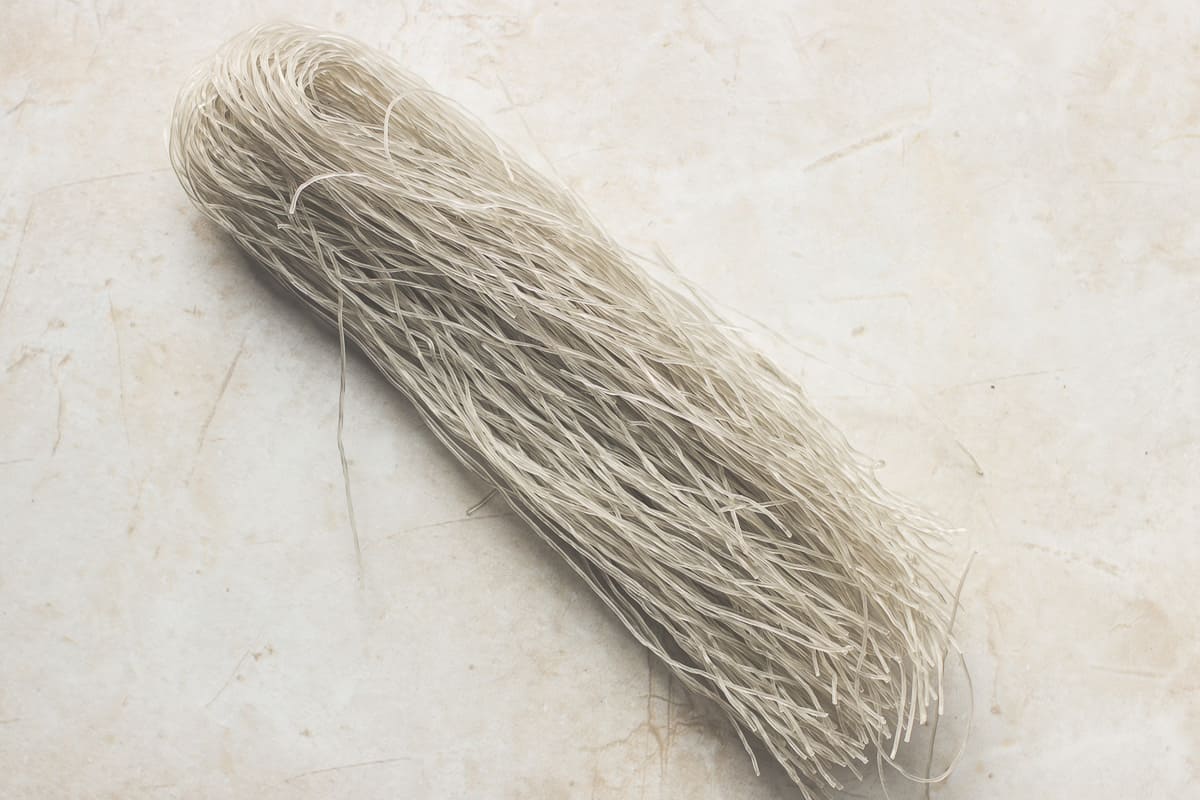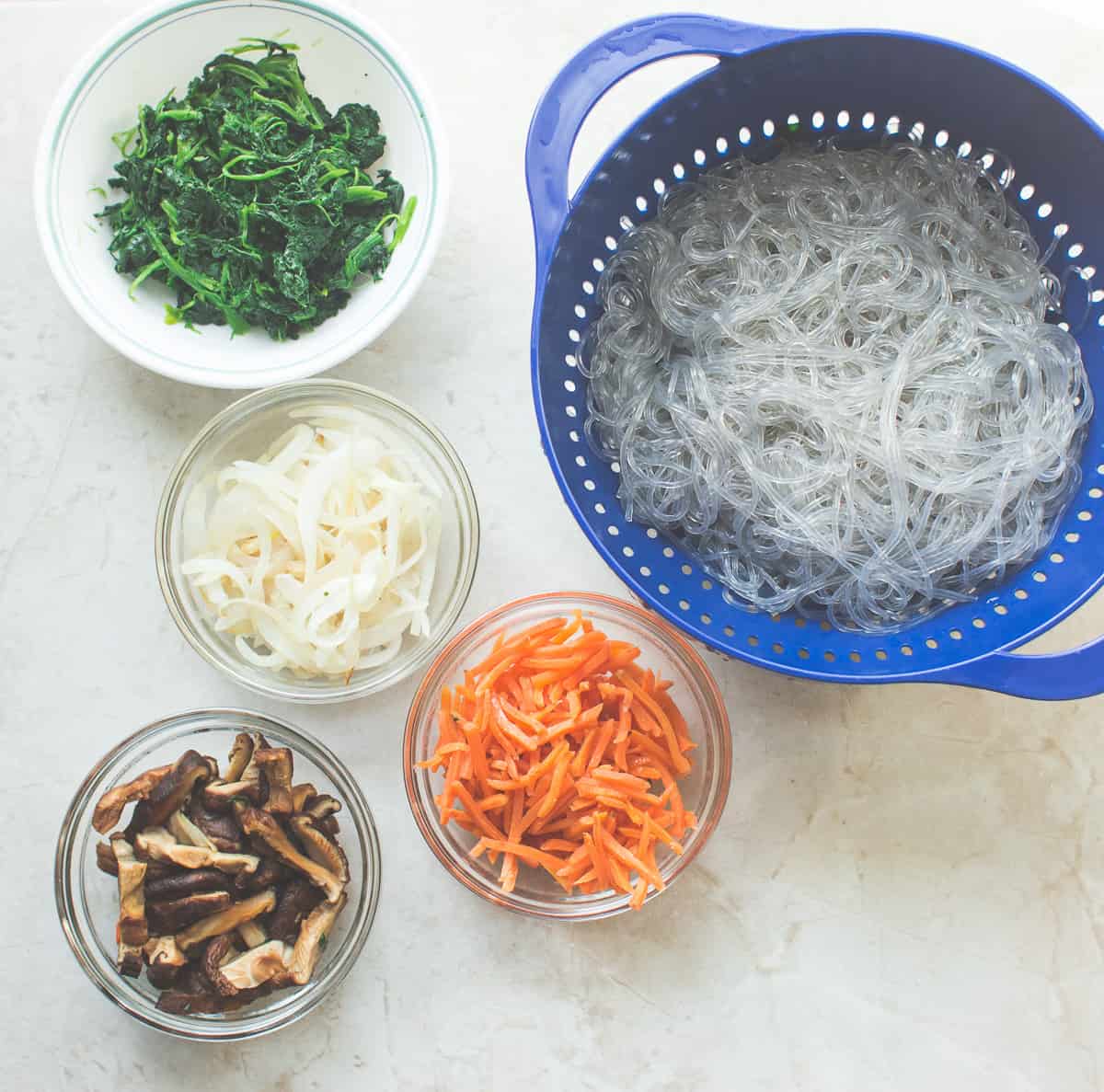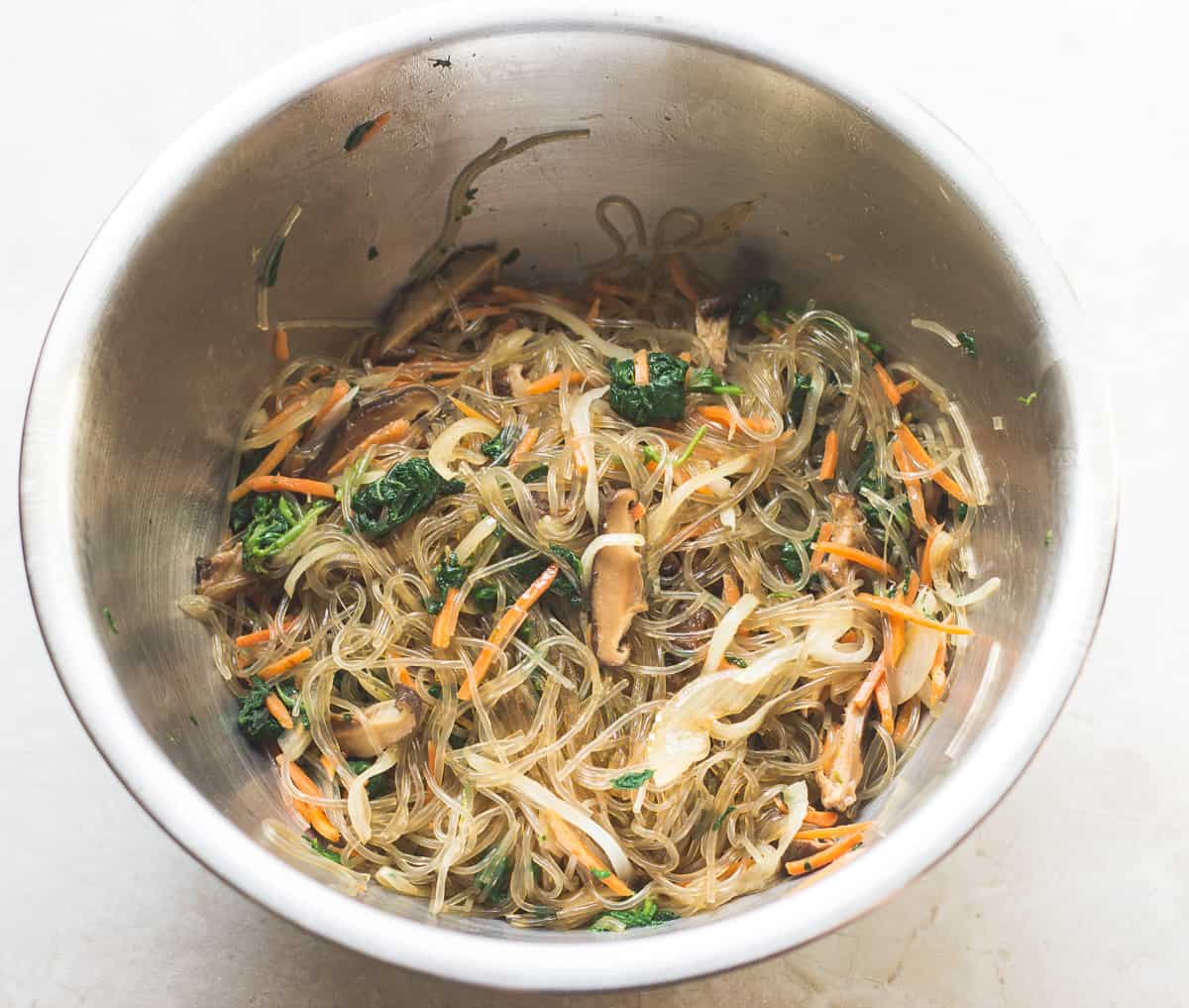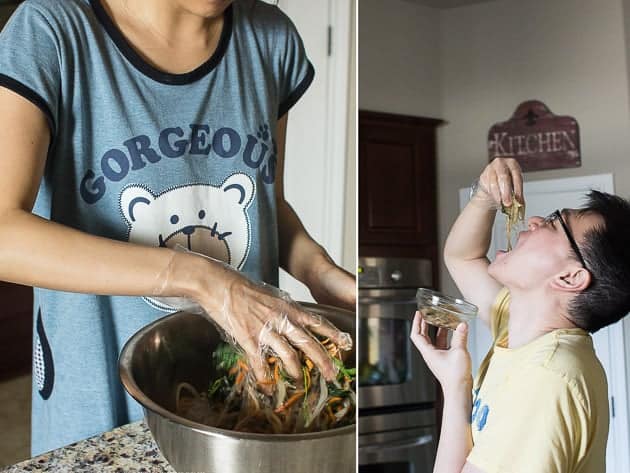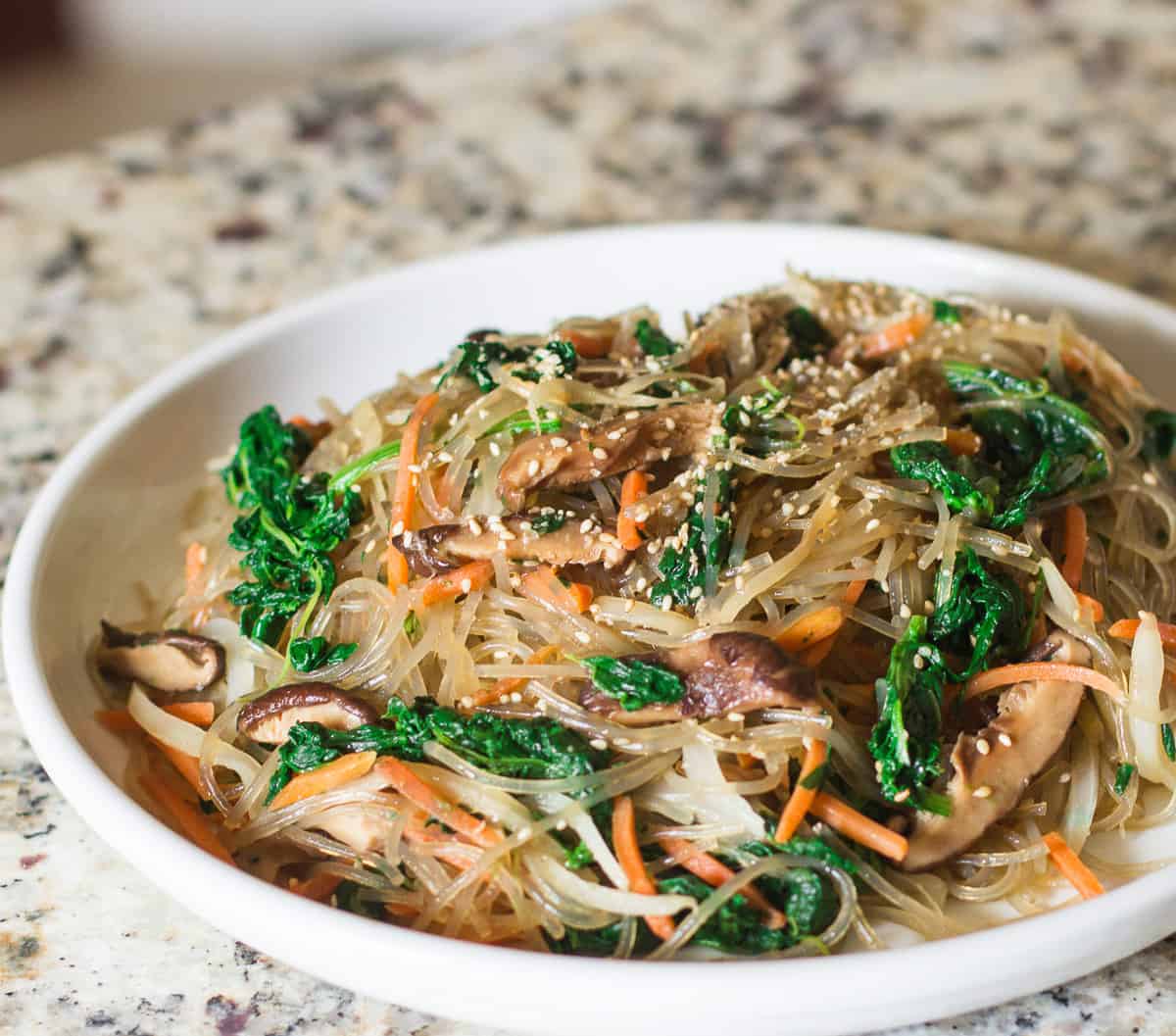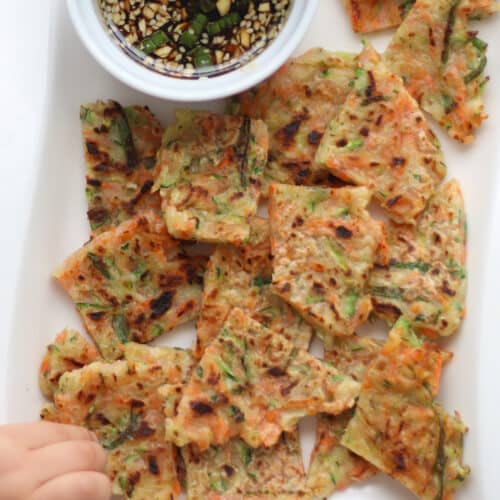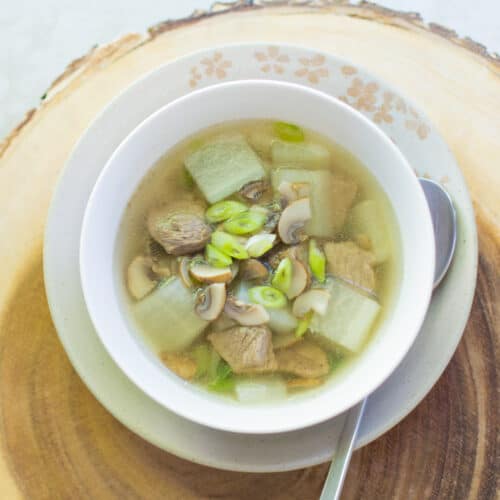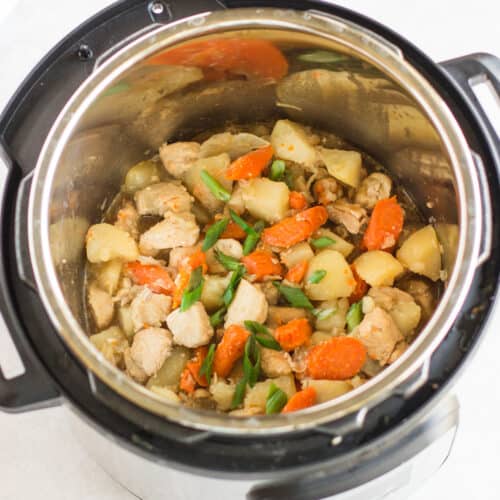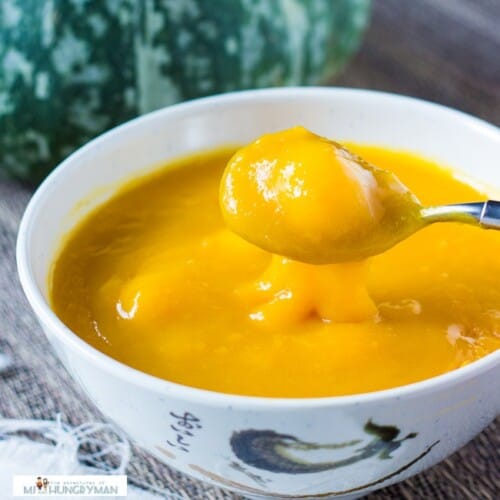Vegetarian Japchae Recipe
I will forever associate this traditional Korean noodle dish with my mom who was known as the “japchae queen” amongst our community growing up. And I can confidently say that you seriously haven’t had japchae until you’ve tried my mom’s! It is simply the best, and I absolutely refuse to order it at Korean restaurants. I’ve asked her to write down the recipe so I can include it in my “Beloved Family Recipes” collection to pass down to my children someday, but she always tells me to move by feel, taste as I go, and as for the seasoning, just eyeball it! Said like a true Korean home cook. So the best I could do is to watch her every move like hawk as I have been doing for many years. And because I love you guys, I measured the seasoning to the best of my ability, but I do have to agree with mom on this one: These kinds of dishes turn out best when you move by feel, allowing your taste buds to guide you. In other words, don’t make this when you are sick :).
Ingredients
Korean sweet potato noodles – also called dangmyeon, Korean vermicelli or glass noodles. Made from sweet potato starch, these noodles, once cooked, are chewy and springy. You will easily find them at Asian grocery stores. Fresh vegetables – While you can add whatever veggies you wish, the most popular ones include onion, carrots, and red bell peppers. Shiitake mushrooms – this is a must in my opinion as it provides a meaty flavor to the dish. Japchae sauce – a combination of soy sauce, sesame oil, and brown sugar or honey to create the perfect balance of sweet and savory notes
Step-by-Step Instructions
While making Korean stir-fried glass noodles may seem complex due to the number of steps involved, once you understand the cooking process, it becomes relatively straightforward to make. It primarily involves cooking glass noodles, stir-frying vegetables, and combining them with japchae sauce.
Tips for Success
Don’t overcook the vegetables. You want them to be tender-crisp in texture as it adds a great contrast from chewy glass noodles. I love sesame oil so I’m quite heavy handed with it, but again, you can decide how little or how much to add. Let my recipe serve as a guide. Along with adjusting the seasoning to your liking, You can add other vegetables, like sweet bell pepper, bean sprouts (which my mom often adds), or just keep it really simple with 1 or 2 ingredients. One rule that my mom stressed is to cook the colorful vegetables separately so that each and every ingredient retains its maximum flavor, color, and texture without blending with the other ingredients.
Serving Suggestions
Japchae is a versatile dish that can be enjoyed warm, at room temperature, or cold! Here are some suggestions:
Main meal – enjoy with a side of kimchi. Side dish – pairs especially well with bulgogi or mandu (Korean dumplings) Bento Box – For a well-rounded meal on the go, you can include alongside other items like rice, protein, and additional vegetable sides. Here are more delicious bento box lunch ideas. Cold noodle salad – garnish with some fresh herbs like cilantro or green onion. Serve alongside miso tofu!
Storage Suggestions
Transfer leftovers to an airtight container and refrigerate for 2-3 days. Reheat in a pan on the stovetop over medium heat. Add a splash of water to prevent the noodles from drying out and stir-fry until heated through. You can also microwave. Note that reheated japchae will be slightly softer in texture compared to when freshly cooked. It will still be delicious though!
More Korean Recipes
Did you make this recipe? Leave a rating below and let me know how you liked the recipe! Your feedback means so much to me!
